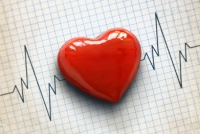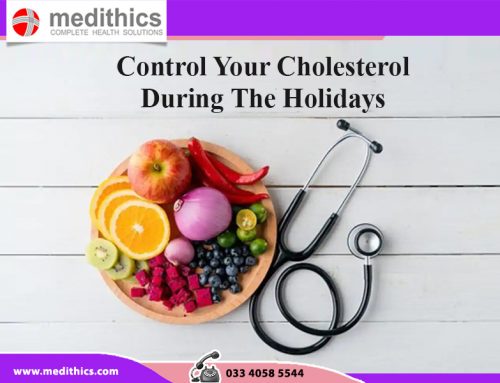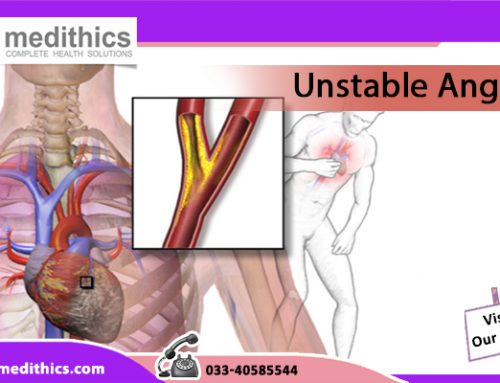According to a cardiologist, palpitation is the sensation that occurs when a patient feels an abnormality in the normal beat of the heart. Abnormalities in the electrical conducting system may cause the heart to beat too quickly, too slowly, or irregularly. Sometimes a palpitation may be a normal variant but it may also be caused by a significant problem that could be life threatening. A palpitation may be an isolated extra heartbeat or it may describe a run of many extra beats that run together for a prolonged period of time. Sometimes a missed beat or a pause can be felt.
There are different causes of palpitations depending upon where in the heart the electrical signal is generated and whether that signal can generate a heartbeat. Many extra heart beats are normal variants and most patients are unaware that their heart has had an extra beat or two; however, others may be dangerous causing short- and long-term complications. Palpitations that originate in the atrium tend not to be acutely life threatening as compared to those that originate in the ventricle.
Palpitations are often described based upon their source location (atrium, AV node, or ventricle), their frequency (isolated or clustered in runs of many beats together), whether the beats are regular in rhythm or irregular and whether they are persistent or stop on their own (self-limited). However, some palpitations are symptoms of an arrhythmia. Some investigators do not include certain arrhythmias when discussing palpitations, but others include them as possible symptoms patients notice during these arrhythmias.
PACs and PVCs
A Premature Atrial Contraction (PAC) occurs when the SA node generates a beat before the heart is quite ready and while a heartbeat is generated, it can feel as if there is a thump or flop in the chest. Because of its early timing, a PAC is often followed by a slight pause as the SA node resets itself. A PAC is a normal variant and may or may not be felt by a patient.
A Premature Ventricular Contraction (PVC) is similarly caused by an early beat by the ventricle, usually caused by an extra electrical beat generated in a muscle cell located in the ventricle. Since it is early, the patient can feel a thump as the heartbeat is slightly misplaced in its normal cycle. As with PACs, PVCs may be asymptomatic and the patient may be unaware that they are occurring. Neither an occasional PAC nor PVC affects heart function.
Supraventricular Tachycardia
Supraventricular Tachycardia (SVT) is a general term that is described by a cardiologist as a rapid heartbeat that arises from electrical signals generated above the ventricle from within the atrium. It may occur due to outside forces acting upon the heart or because of “a short circuit” or abnormal wiring of the electrical conduction system.
SVT may be a normal physiologic response to a stress upon the body. When the body requires more oxygen delivery, the response is for adrenaline to be released and cause the heart to beat faster to increase blood circulation. This may occur as a response to exercise, illness, or injury.
SVT may also occur because of electrical conducting system abnormalities within the atrium and the AV node and may occur without an apparent underlying cause. This is referred to as Paroxysmal Supraventricular Tachycardia or PSVT. This rhythm may start and stop on its own, seemingly without reason or warning, and may last only a few seconds or may require emergency intervention for it to stop.
There can be inborn wiring errors of the heart that can cause special forms of PSVT. Wolff-Parkinson-White (WPW) syndrome is one example and palpitations may occur early in life or not be experienced until later in adulthood.
SVT may be brought on by chemicals that to the heart appear similar to adrenaline. These include caffeine, over-the-counter cold medications containing pseudoephedrine, alcohol, and other stimulant drugs like amphetamine and cocaine. Excess thyroid hormone or electrolyte abnormalities in the bloodstream may irritate the atria and precipitate SVT.
While anxiety may cause the patient to experience these types of palpitations, the health care professional may want to consider other potential causes before ascribing this diagnosis.
Atrial Fibrillation and Flutter
In some patients under treatment of heart specialists, the atrial muscle cells all act like pacemakers, generating an electrical impulse. This causes electrical chaos and the atria cannot beat in a coordinated fashion. Instead of generating an organized atrial contraction, the atria instead fibrillates, or jiggles like a bowl of jelly. The numerous electrical signals that are generated bombard the AV node and it tries to respond but passes on only some of the hundreds of signals that it receives each minute to the ventricle. This leads to the ventricle beating rapidly and irregularly which is termed Atrial Fibrillation (A Fib). Atrial Flutter (AFL) describes a situation where there is an electrical short circuit in the atrium and a loop of cells generates a rapid regular atrial rhythm of about 300 to 400 cycles per minute. The AV node receives these many signals and tries to protect the ventricle from the barrage and passes on only every second, third, or fourth impulse. Often a patient in Atrial Flutter will have an atrial rate of 300 beats per minute but a ventricular rate of only 150 beats per minute. This rate is still fast enough for the patient to experience palpitations.
Even though Atrial Fibrillation and Atrial Flutter are relatively safe rhythms, there are complications that may result. When the atrium jiggles and does not contract, there is a potential for blood in the crevices of the atrial walls to become stagnant and form small clots (thrombus). There is a potential that a clot may break away and travel (embolize) to small arteries in the body, blocking circulation and oxygen delivery. In this way, Atrial Fibrillation is one of the risk factors for stroke and other vascular problems. Atrial Fibrillation may also affect the heart’s efficiency. Without the kick provided by a coordinated atrial beat, blood delivery to the ventricle is decreased and cardiac output, the amount of blood circulated to the body with each heartbeat, falls.
Ventricular Tachycardia and Ventricular Fibrillation
As opposed to rapid atrial rhythms, it is potentially life-threatening situation when the ventricle beats too quickly. Ventricular Tachycardia (VT) occurs when the ventricular electrical system starts firing on its own without input from the SA or AV node. Depending upon the situation, Ventricular Tachycardia may or may not beat in an organized way and generate a heartbeat.
Ventricular Fibrillation (V Fib) is not compatible with life since the chaotic electrical signals do not generate a coordinated heartbeat. The ventricle jiggles and blood is not pumped to the body. Ventricular Fibrillation is the rhythm commonly associated with sudden cardiac death. Both Ventricular Tachycardia and Ventricular Fibrillation are seen as complications of ischemic heart disease, especially after a heart attack, where the ventricular heart muscle is irritated because of lack of blood supply.






Leave A Comment
You must be logged in to post a comment.